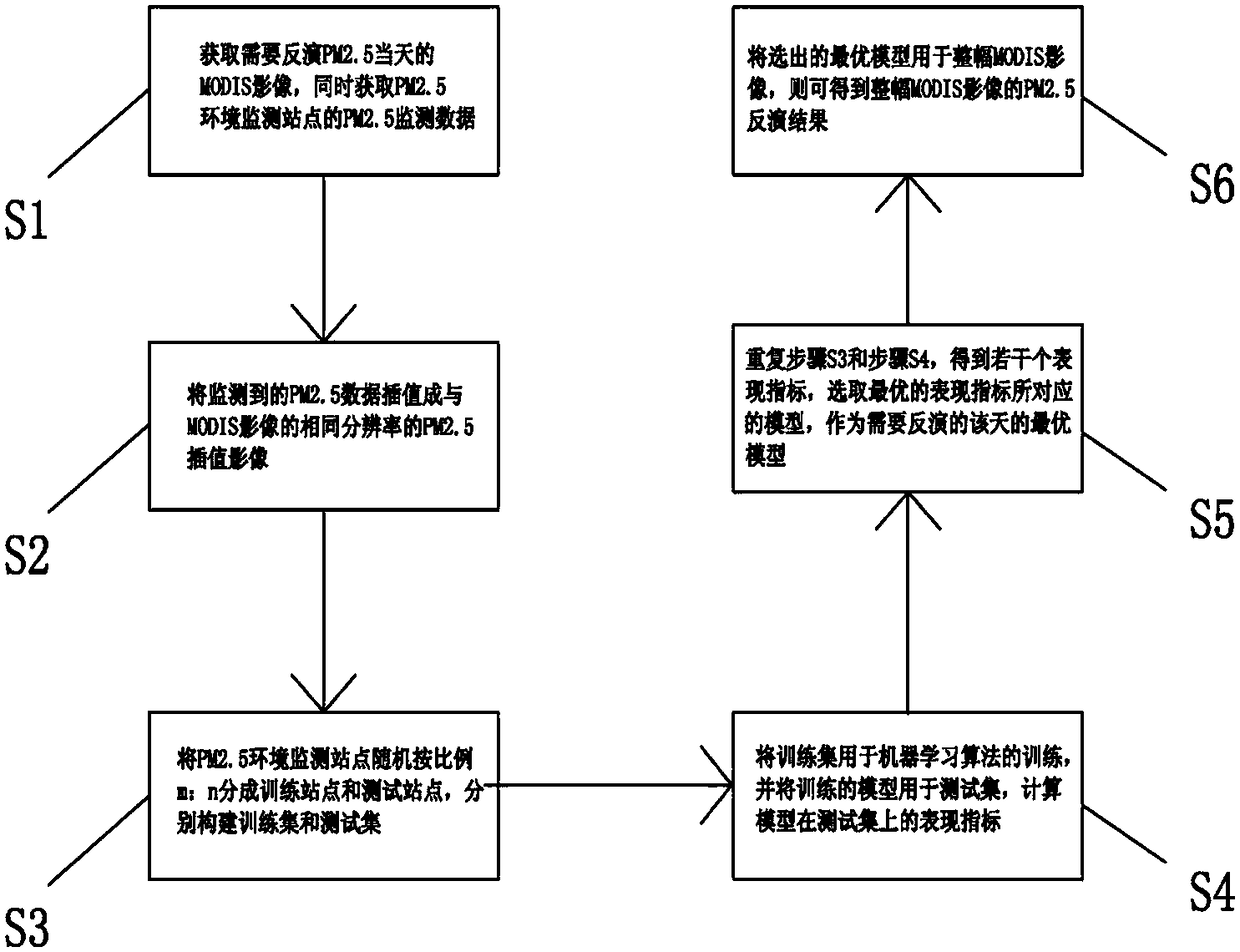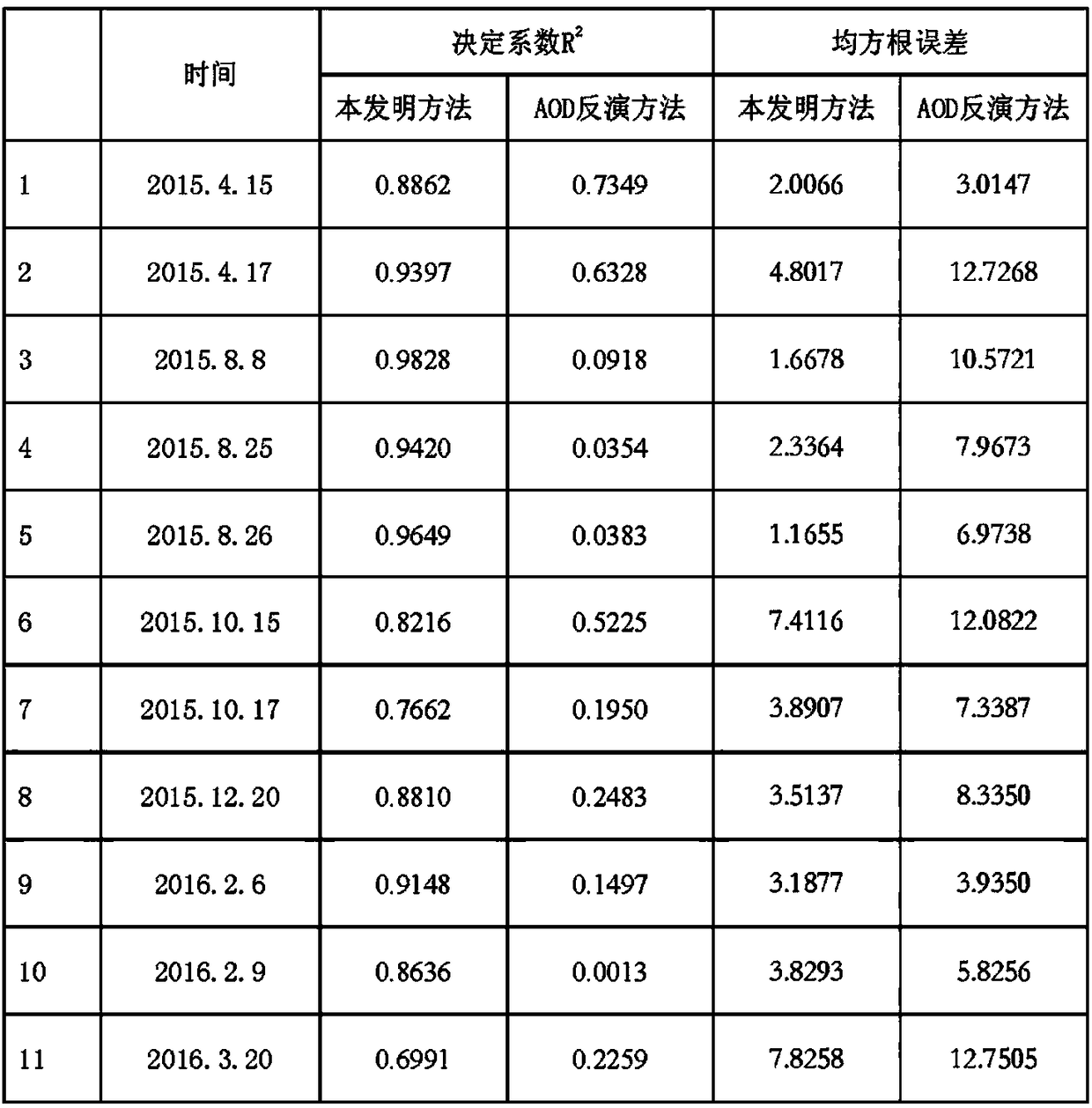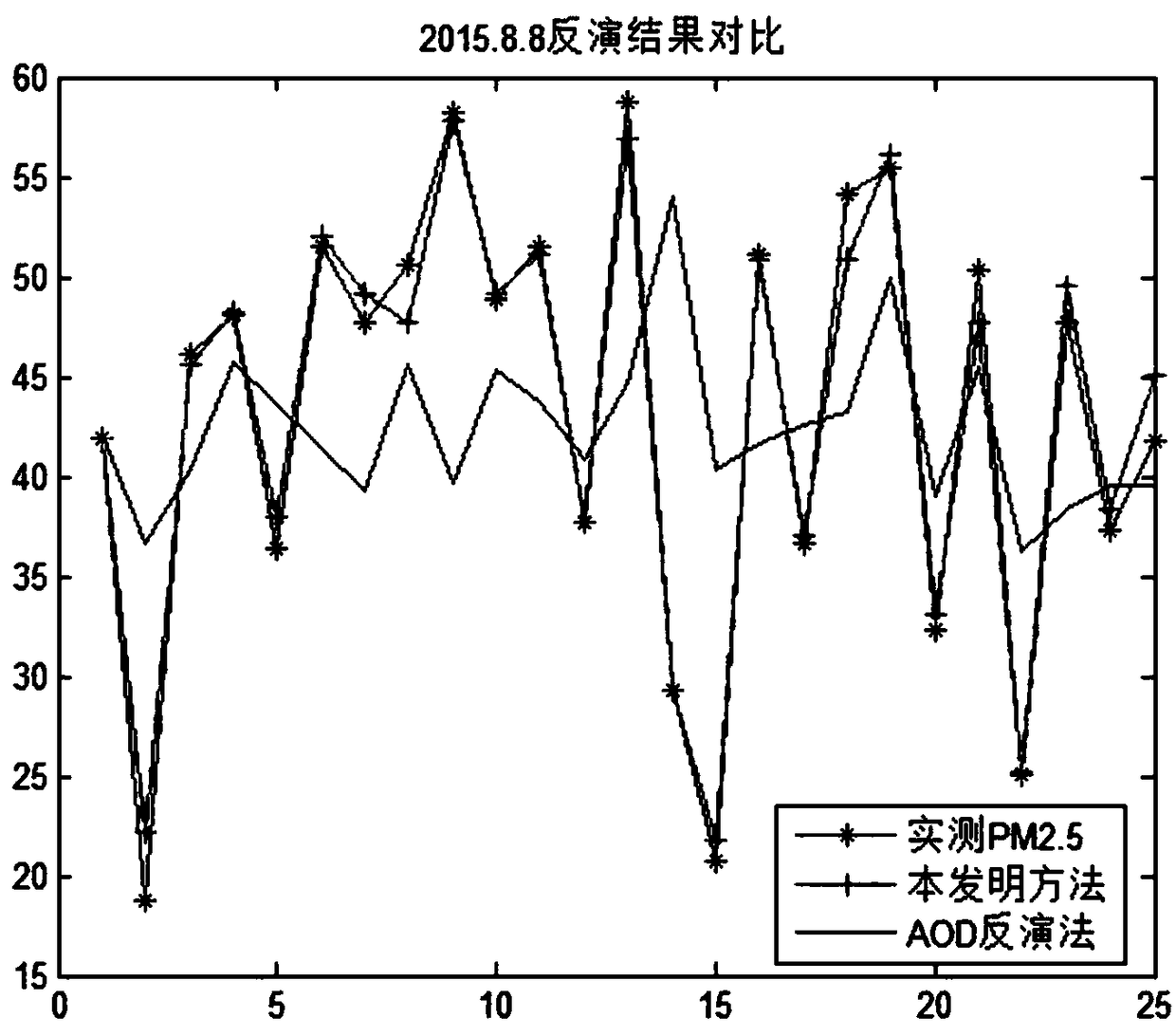MODIS-based PM2.5 remote sensing inversion method
A PM2.5, remote sensing inversion technology, applied in special data processing applications, instruments, electrical digital data processing, etc., can solve the problems of expensive ground instruments, error transmission, restricting PM2.5 effective monitoring and macro analysis, etc. The effect of avoiding error transmission and high inversion accuracy
- Summary
- Abstract
- Description
- Claims
- Application Information
AI Technical Summary
Problems solved by technology
Method used
Image
Examples
Embodiment Construction
[0033] In order to make the object, technical solution and advantages of the present invention clearer, the present invention will be further described in detail below in conjunction with the accompanying drawings and embodiments. It should be understood that the specific embodiments described here are only used to explain the present invention, not to limit the present invention.
[0034] It should be noted that, in the case of no conflict, the embodiments of the present invention and the features in the embodiments can be combined with each other.
[0035] Those of ordinary skill in the art can understand the specific meanings of the above terms in the present invention based on specific situations.
[0036] Such as figure 1 Shown, a kind of PM2.5 remote sensing inversion method based on MODIS of the present invention comprises the following steps:
[0037] Step S1, obtain the MODIS image of the day that needs to invert PM2.5, and obtain the PM2.5 monitoring data of the PM...
PUM
 Login to View More
Login to View More Abstract
Description
Claims
Application Information
 Login to View More
Login to View More - R&D
- Intellectual Property
- Life Sciences
- Materials
- Tech Scout
- Unparalleled Data Quality
- Higher Quality Content
- 60% Fewer Hallucinations
Browse by: Latest US Patents, China's latest patents, Technical Efficacy Thesaurus, Application Domain, Technology Topic, Popular Technical Reports.
© 2025 PatSnap. All rights reserved.Legal|Privacy policy|Modern Slavery Act Transparency Statement|Sitemap|About US| Contact US: help@patsnap.com



